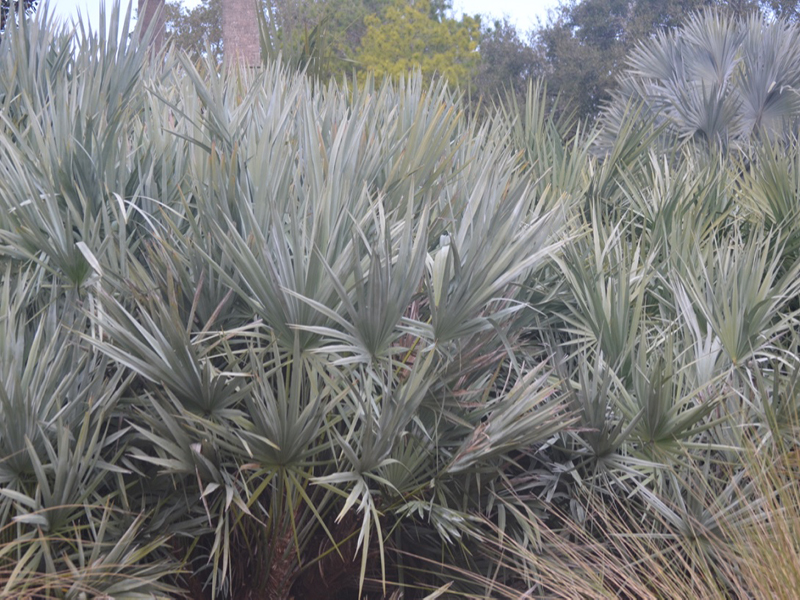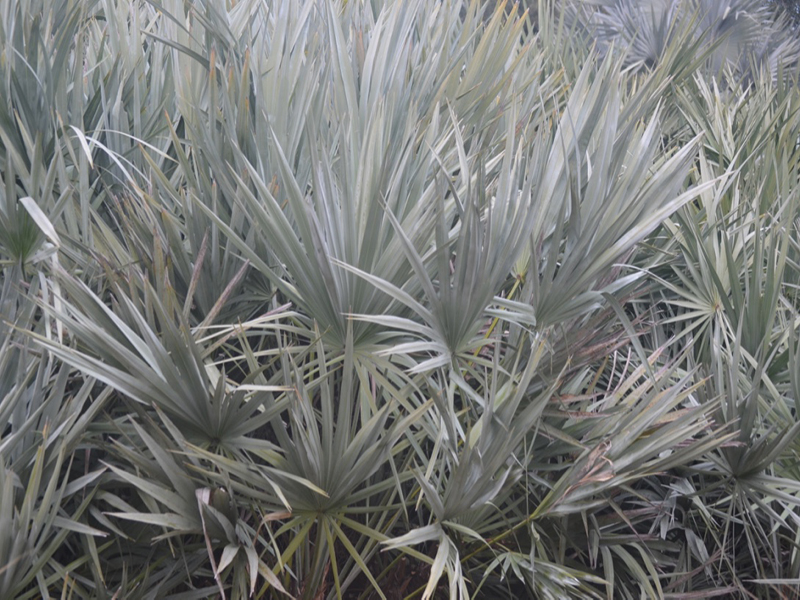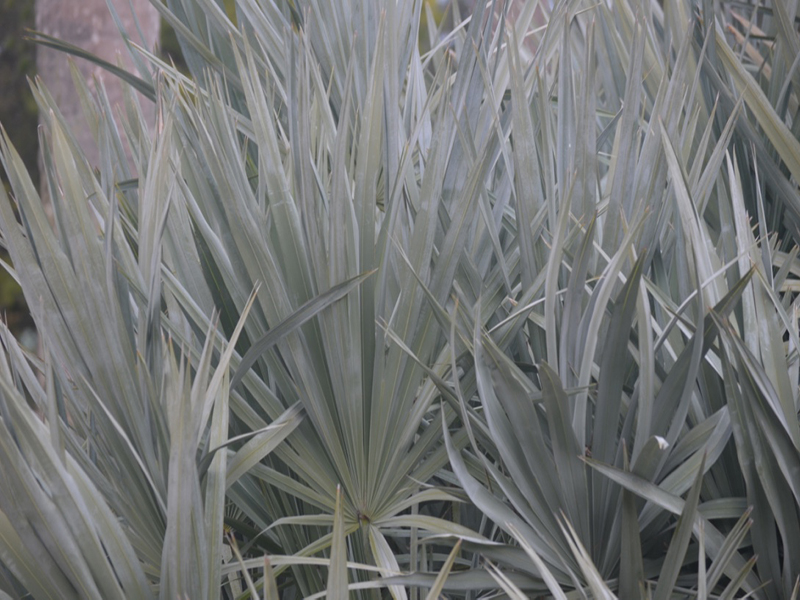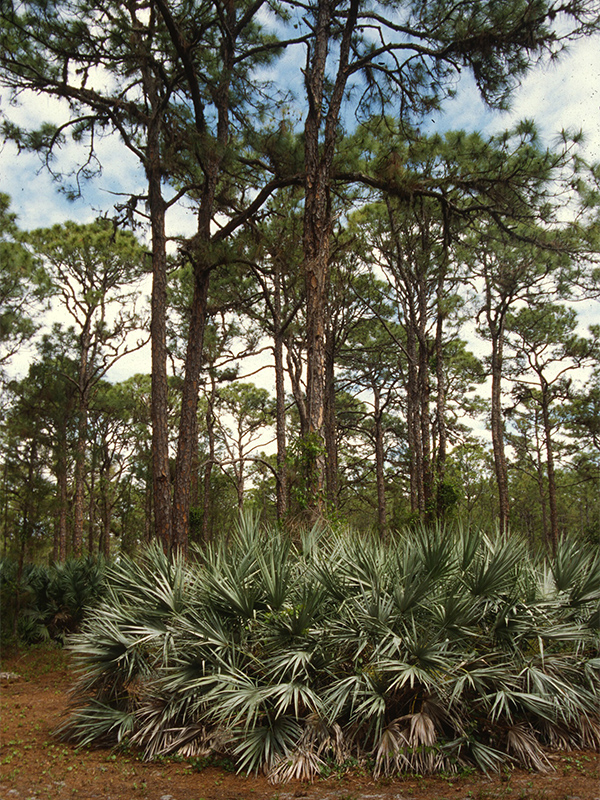
Tropicals > Serenoa > Serenoa repens > Serenoa repens
Serenoa repens
Saw Palmetto
Origin: Southeast United States of America.
| Family |
| Arecaceae |
| Genus |
| Serenoa |
| Species |
| repens |
| Category |
| Tropicals |
| Type |
| Tree (evergreen) |
| USDA Hardiness Zone |
| 8b-11 |
| Canadian Hardiness Zone |
| Requires cold season protection under glass. |
| RHS Hardiness Zone |
| H1c-H4 |
| Temperature (°C) |
| -12.2-10 |
| Temperature (°F) |
| 10-50 |
| Height |
| 1.5 - 3.0 m |
| Spread |
| 1.2 - 3.0 m |
Photographs
Description and Growing Information
Flowering Period
| General Description |
| A low, clumping, bushy palm has large, fan-shaped leaves and multiple trunks that creep along the ground, creating a dense ground cover. |
| Landscape |
| Mass planting, specimen, border and ground cover. |
| Cultivation |
| Grow in any well-drained soil in full sun to shade. Plant is highly salt tolerant. |
| Growth |
| Slow |
| ID Characteristic |
| Saw palmetto is an extremely sturdy palm |
| Bark/Stem Description |
| Showy, typically multi-trunked or clumping stems. |
| Leaf Description |
| Leaf blade length is more than one metre, silver to grey, blue or blue-green leaves. |
| Flower Description |
| 1 m flower stalks appear in spring, covered with small, yellow to white, fragrant flowers, the source of a commercial high-grade honey. |
| Fruit Description |
| Not showy, oval, less than 2 cm long, yellow berries that turn black. Berries are an important food source for many mammals and birds. |
| Notable Specimens |
| Bok Tower Gardens, Lake Wales, Florida, United States of America. Morikami Museum and Japanese Gardens, Delray Beach, Florida, United States of America. |



